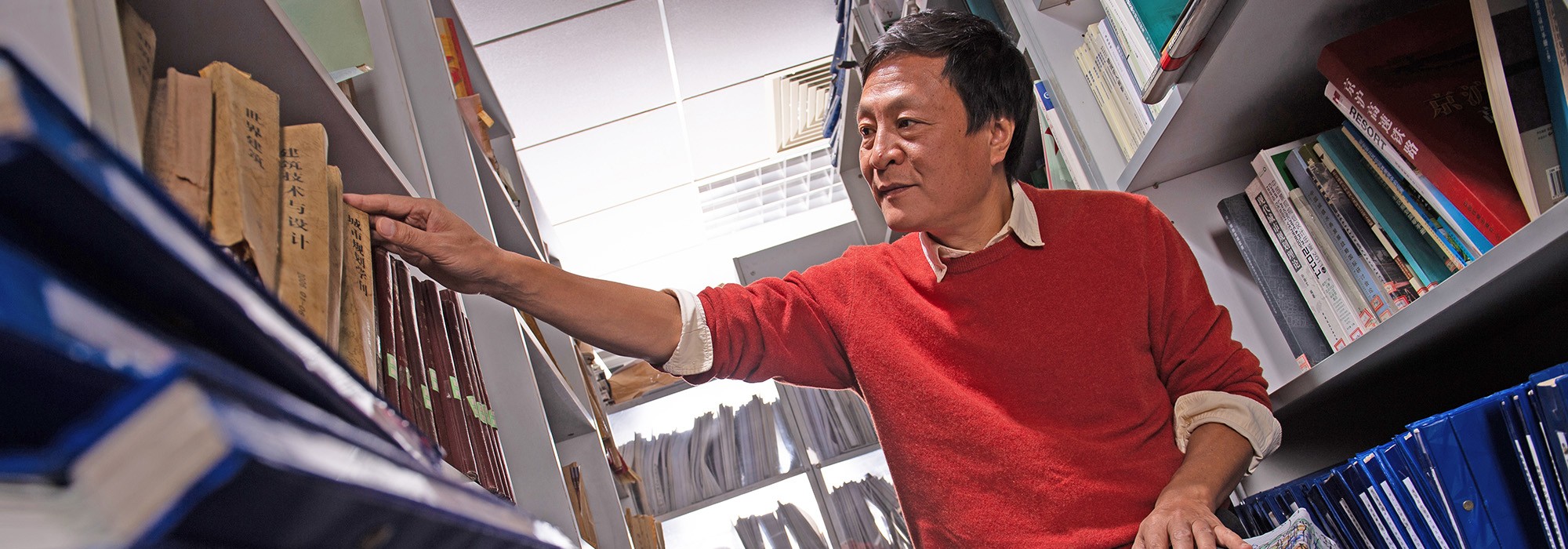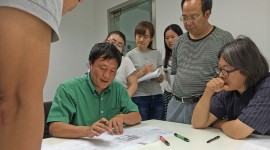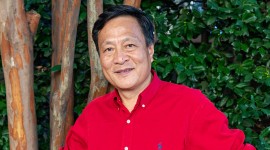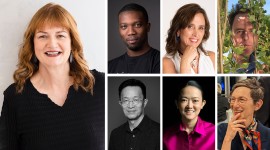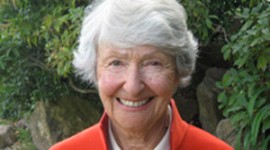About Kongjian Yu
Yu has been called the “Olmsted of China,” a reference to Frederick Law Olmsted, Sr., the influential founder of the landscape architecture profession in the United States and best known as the co-designer of New York City’s Central Park. However, Yu describes himself as a “peasant’s son” who was born in 1963 and raised in Dong Yu village in Jinhua, Zhejiang Province, which had a population of less than 500 people, a place he called a paradise. It is where the White Sand Creek flows down from the mountain through 36 weirs, which help facilitate crop irrigation, and into the Wujiang River. When the monsoon season-related flooding came, he says, the whole village would get excited because carp would swim up the creek from the Wujiang River to spawn, going over the low weirs, and into the fields and rice paddies where they were caught.
“Yu’s journey from farming in a remote Chinese village to international preeminence in landscape architecture traces an extraordinary odyssey,” wrote William Saunders in the book Designed Ecologies: The Landscape Architecture of Kongjian Yu, (2012). “[D]uring the 1966 to 1976 Cultural Revolution … [h]e grew up near an enchanting forest and a fish-filled creek, only to see the forest cut down and the creek become too polluted to support life. This helps explain the depth of his commitment to recreating and protecting natural abundance. He suffered social ostracism in the countryside for having wealthy ancestors and then for being a ‘country bumpkin’ when he made it to the big city. This helps us understand his conviction that parks are to be enjoyed by all ranks of people. He loved farming and was proud that his commune used every square meter of its land productively. This helps explain his revulsion to landscapes that are ‘merely’ ornamental. He learned how to deploy scarce water resources and cultivate crops in ways that ensured their survival. And this helps us understand his will to create parks that are low-maintenance and ‘productive.’”
In 1978 Deng Xiaoping reversed the policies that barred children of the landlord class from going to school. Within two years, according to Oberlander Prize Curator John Beardsley’s essay in Designed Ecologies, Yu was the “only one of three hundred in his county’s secondary school to pass university entrance exams [and] he was admitted to Beijing Forestry University in 1980. Because his examination score was higher than that required for forestry, he was invited to enroll in the landscape gardening program, which he recalls as the only university program in the field at the time in China.” He earned a Master’s degree in 1987.
Yu cites three events as being influential. In 1972, the year that U.S. President Richard Nixon came to China, his village used newly available pesticides for the first time. The use of DDT resulted in a massive fish kill and the sickening of people who consumed the contaminated fish since no one knew the pesticide was poisonous. A year later he fell into the monsoon swollen creek and nearly drowned. He caught hold of an overarching branch of one of the stream’s many willows; the trees and other volunteer vegetation slowed the current. In the 1980s concrete dams, culverts, pipes, and other so-called “grey infrastructure” were constructed throughout China, which severely disrupted the natural flow of the local waterways, eradicated trees and vegetation (the sort that saved him from drowning), and altered finely calibrated irrigation networks, including in his own village. In a recent interview Yu said “the destruction of my own paradise is what make me think that we need a revolution”; at the core of that revolution is the “sponge cities” concept.
After Yu received Doctor of Design Degree, he practiced with the SWA Group in Laguna Beach, CA, before returning to China in 1997. His pioneering research on Ecological Security Patterns (1995) and Ecological Infrastructure, Negative Planning and Sponge Cities (2003) has been adopted by the Chinese government (2013) as a guiding theory for nationwide ecological protection and restoration campaigns. He created Peking University’s landscape architecture department, which started with three students and has graduated more than 1,200 master’s and doctoral students. He helped shift Chinese national-level policies from economic development-centered urbanism toward ecologically prudent urbanism through numerous letters to top Chinese leaders and more than 600 lectures to mayors, ministers and almost all ranks of Chinese officials; numerous media appearances; and as a leading member of several national expert committees, including vice president of the Society of Urban Studies.
Yu is the founder and leads the Graduate School of Landscape Architecture, and the College of Architecture and Landscape Architecture at Peking University. He is also founder and principal designer at the landscape architecture firm Turenscape, which today numbers more than 500 employees. The firm’s name combines the characters “Tu,” which means dirt, earth, or the land, and “Ren,” which means people, man, or human being. “Turen … means earth man, a relationship between land and people. The firm’s philosophy is to create … harmony between land and people and … sustainable environments for the future.” Yu received a Doctor of Design Degree from the Harvard University Graduate School of Design (1995) and is the author of more than twenty books and the founder and chief editor of internationally awarded magazine Landscape Architecture Frontier. He has been an invited lecturer, speaker, and guest professor around the world; he and his firm’s projects have received numerous awards.
For more than 25 years, he has spent his career fighting against deteriorating urban ecologies and transforming and stewarding the natural and cultural environment. His work has significantly elevated the role of design in the process, and what landscape architects can provide in designing large-scale nature-based solutions for the public’s benefit and enjoyment. To date Yu and his firm have some 600 built projects in more than 200 cities, principally in China, but also in Thailand, and the U.S.



